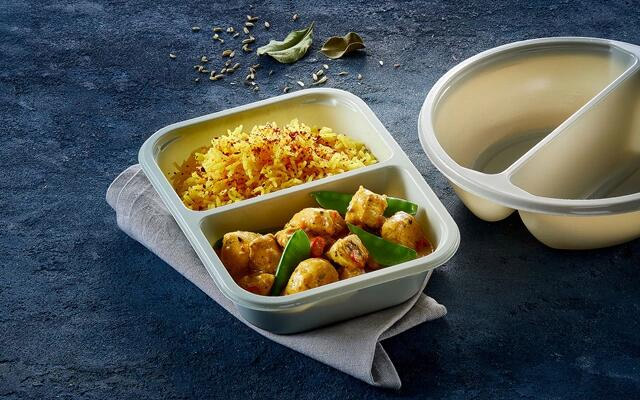How do EVOH barrier trays address concerns about environmental sustainability in packaging?
EVOH barrier trays can address concerns about environmental sustainability in packaging in several ways:
Recyclability: EVOH barrier trays are designed with recyclability in mind, utilizing materials that can be easily sorted, collected, and processed in recycling facilities. These trays are often marked with recycling symbols to facilitate proper sorting and recycling by consumers and recycling facilities alike. By integrating EVOH trays into existing recycling streams, materials can be continuously reused in a circular economy model, reducing the need for virgin resources and minimizing waste. Advancements in recycling technologies have made it possible to efficiently recover EVOH materials from mixed plastic waste streams, further enhancing the recyclability and environmental sustainability of these trays.
Lightweight Design: The lightweight nature of EVOH barrier trays offers numerous environmental benefits throughout the product lifecycle. Firstly, lightweight packaging requires fewer raw materials for production, reducing the overall environmental impact associated with material extraction and processing. Lighter packaging results in lower transportation emissions as less fuel is consumed during shipping and distribution. This not only reduces greenhouse gas emissions but also conserves finite resources and minimizes air pollution. Lightweight packaging can lead to cost savings for manufacturers and retailers, encouraging widespread adoption and further reducing the environmental footprint of the supply chain.
Extended Shelf Life: EVOH barrier trays play a crucial role in extending the shelf life of perishable goods, thereby reducing food waste and its associated environmental impacts. The superior barrier properties of EVOH prevent oxygen ingress and moisture loss, preserving the freshness, flavor, and nutritional value of packaged foods for longer periods. By minimizing spoilage and the need for premature disposal, EVOH trays help conserve the natural resources invested in food production, including water, energy, and agricultural land. This not only reduces the environmental footprint of food waste but also contributes to enhanced food security and sustainability on a global scale.
Energy-Efficient Packaging Processes: EVOH barrier trays are compatible with advanced packaging technologies such as modified atmosphere packaging (MAP) and vacuum packaging, which optimize the packaging environment to prolong product freshness and shelf life. These processes typically require less energy compared to traditional preservation methods such as canning or freezing, as they rely on controlled atmospheric conditions rather than continuous refrigeration or thermal processing. By reducing energy consumption during packaging and storage, EVOH trays contribute to overall energy efficiency and resource conservation in the food supply chain, aligning with global efforts to mitigate climate change and promote sustainable development.
Reduction of Single-Use Plastics: In response to growing concerns about plastic pollution and its adverse effects on the environment and human health, there is increasing momentum to reduce the consumption of single-use plastics. EVOH barrier trays offer a sustainable alternative to conventional single-use plastic packaging, providing a durable, lightweight, and recyclable solution for a wide range of food products. By replacing single-use plastics with EVOH trays, manufacturers and retailers can minimize their environmental footprint, reduce plastic waste generation, and contribute to the transition towards a circular economy. The versatility of EVOH trays allows for the development of innovative packaging designs that enhance consumer convenience while minimizing environmental impact, further supporting the shift away from single-use plastics.
Ready meal packaging

Post Comment